Four years ago, I bought my third electric car. The first two were interesting, but not overwhelming. But No.3 has been an eye-opener. The vehicle is a Tesla Model 3 Long Range All-Wheel Drive in dark blue with a white faux-leather interior. I call it Oskar. It was a leap of faith to buy Oskar, and I was prepared for disappointment, especially after having run the ostensibly more luxurious and more capable Jaguar I-Pace for a year. But…
After seven months and 5,000 miles (ca. 8,047 km) of use, I wrote a comprehensive review which covered almost every aspect of using and owning the car. That was in October 2021 and is worth revisiting if you are contemplating buying an electric car.
Despite the three years and six months that have since elapsed, I stand by everything I wrote then. The Model 3 has been a completely reliable, durable, comfortable, fun-to-drive and technically satisfying experience. It has almost been too good to be true, and I rather regret I haven’t unearthed some gremlins to balance this end-of-ownership report. Forgive me if this sounds like a Tesla fanboy statement.
While this article is very much off-piste for a photography magazine, previous articles and road tests of EVs have proved popular with readers. The Jaguar test, mentioned below, regularly brings in hundreds of readers every month, some five years after it was published. Buoyed with this level of interest, I intended to do a one-year review of the Tesla, then a two-year and three-year. But the car passed all these milestones and I had nothing new to report. Still, I did promise an update, and here it is.
Seasoned EV owner
I am no stranger to electric vehicles, having leased a Nissan Leaf back in 2014 and owned a 2019 Jaguar I-Pace for twelve months until early 2021. I wrote about my experiences with the Jaguar and concluded that, as a luxury SUV, it has few equals, irrespective of the method of propulsion.
Yet, it wasn’t a perfect experience. The relatively short range (under 200 miles [ca. 322 km]), reliability issues and an unwieldy and inadequate software update system served to force a premature switch. Bear in mind, though, that all has probably changed, and the Jaguar experience is most likely now much better, although the car is apparently out of production.
Before buying the Jaguar I-Pace, I seriously considered a Tesla Model 3. I ordered one (twice) and then cancelled before delivery. Those were the days when the £100 deposit was refunded on cancellation. Now it’s £200 and non-refundable if you change your mind.
Above all, I was worried that I would hate that solitary central control screen and rather radical sparse interior. In the end, the familiarity of the Jaguar interface, with its rows of knobs and buttons, and promise of traditional comfort, tilted the balance in the direction of Gaydon.
That was the wrong decision, as it happened. After twelve months, I lost patience because of unreliability (almost entirely linked to the charging port mechanism), ditched the Jag and placed an order for the first of the Chinese-made Model 3s, which arrived in the UK in March 2021. I soon discovered that the things I thought I would dislike became familiar and natural.
As a car, the Oskar has been a perfect companion. I had thought that by now, after four years and 18,000 miles (ca. 28,968 km), I would have had something negative to say. Yet, my first impressions were spot on. Furthermore, the ownership experience has been constantly updated thanks to Tesla’s faultless overnight software downloads, which bring every car up to the standard of the latest models to leave the factory.
Why buy a Tesla Model 3?
The reason I like electric cars will surprise you. Environmental concerns do not persuade me. In fact, I would just as happily drive around in a petrol or diesel car, and good luck to you if that’s what you prefer. Freedom of choice is everything, and it is good we still have that freedom, if only for a time.
Don’t buy an EV because you feel you have to, or as a means of virtue signalling. Instead, buy it for fun.
There is just one reason I choose to drive electric cars: For me, they are more entertaining and fun to drive than most vehicles. I love the experience of one-pedal driving, where regenerative braking turns the accelerator pedal into a simulation of an elastic band. Press to go, ease off to slow down.
It is possible to drive for hundreds of miles without using the brakes except in emergency. This brings several benefits, including comfort and ease of driving. Plus, lack of brake pad and disk wear which helps ensure that, over four years, maintenance has been minimal.
Don’t buy an EV because you feel you have to, or as a means of virtue signalling. Instead, buy it for fun. Not all EVs are as much fun as the Model 3, of course, but you have to make a careful choice. And I fully understand if you prefer to stick to internal combustion. Electric charging is not for everyone. Despite my enthusiasm, I would go back to a petrol car if I did many more long-distance journeys.
Quality and ambience
There are urban myths about Tesla quality, with panel fit being a major trope. All I can say is that I am perfectly happy with the fit and finish. There were certainly problems in early cars, but I cannot complain about this Chinese-made version.
After four years, there are no annoying creaks or squeaks, the white “vegan” leather upholstery is as good as the day it left the factory, and no faults have arisen in the car as a whole.
Before I got the Tesla, I would have run a mile to avoid vegan leather and would have insisted on real animal skins for my car. But I am now converted, both by the appearance and feel of this material. We’ve come a long way since those sweaty beige-plastic “taxi” seats of lower-rent Mercedes and BMW cars in the Seventies and Eighties.
The car handles like a sporty saloon, such as the BMW 3-series. That said, the steering can often feel rather disconnected and isn’t quite up to the best. It’s a low car, and the heavy battery keeps the centre of gravity even lower — a big plus for handling. The car is refined, despite some road and wind noise, which is probably no worse than the competition in this sector. The absence of engine noise can exacerbate the perception of road and tyre noise in an electric car.
But it is a comfortable and relaxing vehicle to drive over long distances, with more than adequate seat adjustment for most people. Overall, the car still looks like new, despite scuffs on the wheel rims which are down to my clumsiness in parking. This is par for my course.
And I have been delighted with the lack of attention and servicing. With no regular schedule, I booked the car in to Tesla after two years for a check-up — simply because I felt I had to. New wiper blades were fitted, the cabin air filter was replaced, and the fluids were checked.
Apart from that, the only other cost has been for one replacement tyre following a puncture. The car has passed two annual government safety checks (MoT) since it turned three years old. It has just been done for 2025 with nothing to report, no faults detected.
Technology
I love a good bit of technology. But the Tesla Model 3, despite its radical user interface, makes things simple and easy to understand. The screen interface is excellent, although occasionally, it can be a fiddle to adjust driving aids such as windscreen wipers, entertainment, and the climate system. After a time, though, all this becomes second nature. And I make extensive use of voice commands to handle simple tasks.
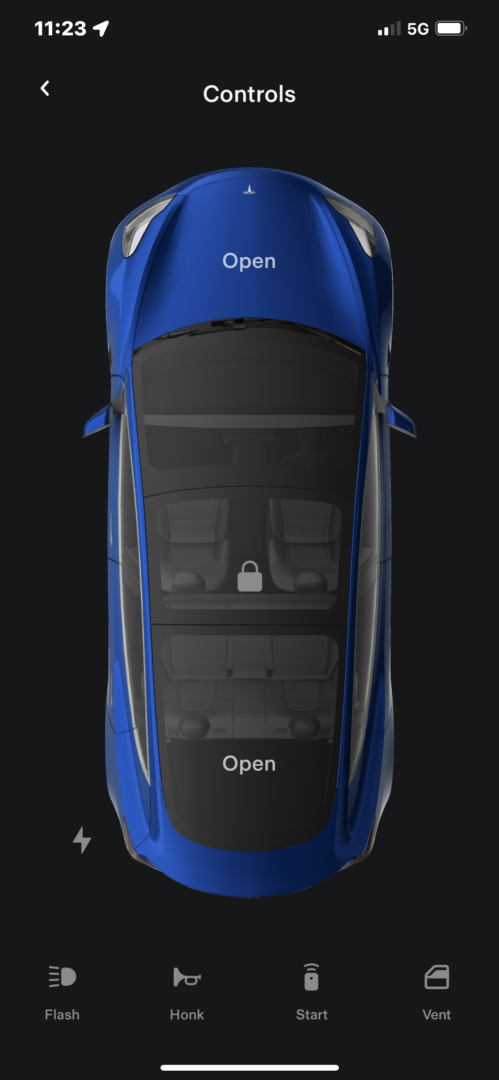
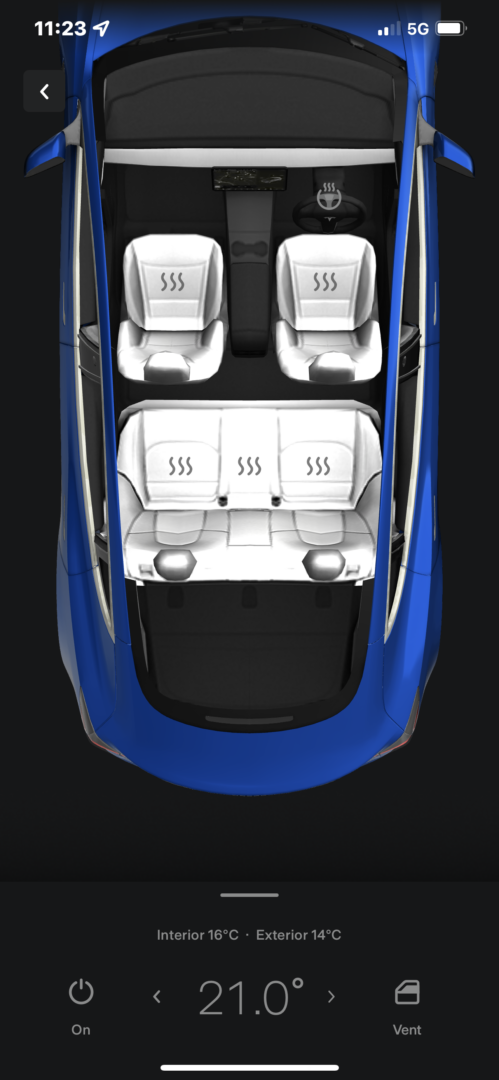
The Tesla iPhone app ensures that I never have to use a key or, even, the key card provided. As I approach, the car is unlocked and all I have to do is enter a four-digit PIN on the centre screen to start the journey. The use of a PIN is optional, but I thoroughly recommend it.
Tesla’s software update system must be the best in the business. It happens automatically overnight, and you wake up to find new or improved features ready to use. It’s all part of the company’s policy of ensuring that older cars have the same driving experience, where physically possible, as the latest models. The user interface has changed dramatically, and for the better, since I bought the car.
Auto-Park: An example
A recent and immensely impressive update changed the auto-park system radically. Overnight, it was transformed into a system I look forward to using. Auto-park before was too much trouble to use, as it is on most cars, and I found it quicker to park manually.
Now, in complete contrast, I drive around looking for the chance to demonstrate the car’s new-found parking prowess. Spot a slot, press a button on the screen, and the car parks itself. It’s quick, precise, and turns a chore into an enjoyable experience. I hope it will help prevent wheel-rim scuffing in the future.
The whole experience of keeping up with the latest Teslas is handled faultlessly. Not once in four years have I experienced an update problem.
This brings me back to the one-screen concept adopted by Tesla, and the almost complete absence of knobs and dials. There’s a good reason for this, as evidenced by the ease of system update. The more physical controls, the more you will find that your car cannot be updated to the latest operating system. A change of design, a new dashboard, and the programming goes all to pot. Dear old Oskar, with his one-screen-does-all approach, is as easy to update as a smartphone.
Self-driving
Much is made by Tesla of “full self-driving”. What is implied is future full self-driving because, presently, the ultimate software package isn’t up to much, as I will explain.
There are three levels of automation available in the UK. As standard, Teslas come with auto-steer and traffic-aware cruise control. For many people, this is as much as they need.
The Enhanced Autopilot pack, at £3,400 (here in the UK, including 20 percent tax) is well worth having, however. In addition to the basic features, Enhanced Autopilot (EA) adds lane change and overtaking, and driver-initiated on/off ramp manoeuvres.
You also get the now-wonderful Auto Park and less exciting Summon (where you can call the car out of a parking spot, for instance). In fairness, Summon works well in the USA, but, because of restrictive legislation in Europe, it is something of a gimmick.
Less desirable presently is the Full Self-Driving pack (FSD) which will enable future improvements. Currently, though, it is restricted to traffic light and stop-sign awareness, enabling the car to stop and start automatically.
For yet another £3,400, this is difficult to justify, although it works well and is desirable. If you already own the pack, enjoy it as I do.
The basic auto-steer and overtaking system will handle a motorway journey well, reducing the driver input. You must keep your hands on the steering wheel and demonstrate you are alive by gently twitching the wheel. Over the past four years, the system has been refined and is now much more reliable and less stressful than it was in 2021.
The system still isn’t perfect, though. In city streets, the car is bullied by more aggressive drivers and is ultra-cautious in decision-making. Self-driving systems are almost by definition cautious and will signal “after you, Claude” to an impolite human driver.
However, I use it in low-speed stop-start traffic and it works well. I don’t think true full self-driving will be practical until every car on the road is equipped, and human drivers have been relegated to an overseeing capacity.
Charging
Range anxiety is a real problem for electric vehicle owners. Don’t be misled by stories of umpteen thousands of chargers all over any given country. Most are low-power 7.5 kWh units, which will take up to ten hours to fully charge your car. Faster chargers, ideally up to several hundred kWh but no less than 50 kWh, are what you need.
Oskar can handle up to 250 kWh charging. Basically, this will top up the car from 10 or 20 percent to 80 percent in 20 minutes or so. When travelling, I stop for a coffee, plug in the car for the duration and then repeat when I again require a break. Oskar more or less complements my comfort requirements.
Running costs of the Tesla Model 3, except for depreciation, have been generally lower than those of an equivalent petrol or diesel vehicle. Depreciation is by far the largest cost. The Tesla has retained just 45 percent of its original value after four miles [I mean years, of course. But thanks, Tom, for noticing this]. Considering the low mileage, this is poor and is a reflection of the recent downturn in sentiment. The average retention for a car after four years in the UK is 51 percent.
Tesla benefits from the excellent Supercharger network. It is perhaps the main reason for choosing the marque over other brands. In four years, I have never had to wait for a slot, but then I seldom travel at peak hours. Your experience could be different. Charging is simplicity itself. Drive up, plug in the cable and the car starts charging. Handshaking is automatic and Tesla holds your credit card details.
Economy
There is evidence that the EV honeymoon is over and cars are depreciating faster as internal-combustion cars become scarcer because of legislative sanctions. Insurance costs are slightly higher than for an equivalent petrol car, but, again, not dramatically so if you shop around. Teslas are known to be expensive to repair, and this is a factor insurance companies must consider.
The real savings come in the almost complete absence of service costs, the free road tax (a holiday that ends on 1 April 2025 in the UK) and very cheap fuel costs. When I first bought the car, I was able to enjoy a night-rate of 5p per kWh. This meant that the fuel cost was about 1.2p a mile, or £2.40 to drive from London to Manchester. Those were the days.
Things have since changed, and I am currently paying 24p for home charging and, typically, 40p for public charging (which varies according to location, popularity, and time of the day).
Costs will vary from country to country, sometimes dramatically, so take my evidence as merely an indication of the overall cost of fuelling a Tesla Model 3.
One aspect, though, is probably common to most countries. At first, as a means of encouragement, there were purchase incentives and other freebies during the life of the car.
That is now all coming to an end. Predictably, governments have realised that they are in serious danger of losing tax revenue; therefore EVs must lose their advantages.
Tesla Model 3: The stats
Tesla owners are fortunate to have an independent on-line monitoring system known as Teslafi. It lists all my journeys over four years. So I can see where I charged and how much it cost, not to mention where I travelled. But the car’s on-screen statistics are also an excellent guide to usage, range and fuel efficiency.
In the four years of ownership, 83 percent of my charging has been done at home and 16.6 percent at public stations. Overall, the car has consumed 4,367 kWh of juice at a modest cost of £689.85, an average of fourpence per mile. When I bought the car, I received 1,000 free Supercharger miles, which I have interpreted as 250 kWh and taken this into account in the calculations.
An equivalent petrol car would use approximately 500 (Imperial) gallons of petrol at a current cost of £3,250 or 18.5p per mile. This figure is a remarkable 4.6 times higher than the total energy consumed by the Tesla. However, electricity costs have risen in the past two years, and I estimate that future costs for the same 17,500 miles (ca. 28,164 km) would double from £690 to around £1,250.
Efficiency
Efficiency is the keyword for Tesla. The Model 3 has always been one of the most efficient EVs on the road, and the Tesla’s average consumption of 249 Watt/mile is right at the top of expectations. The actual range varies significantly, depending on driving style, local vs long-distance, weather and other factors (such as the aerodynamic efficiency of the car and, in particular, the wheels), but 249 Watt/mile, or 4.1 miles (6.6 km) per kWh, is probably as efficient as you can get.
This model, with dual motors, has a battery capacity of 82 kWh, which is on the low side compared with some competitors. However, because of the car’s overall efficiency, this translates into a maximum theoretical range of 336 miles (ca. 541 km), which is precisely what I see on the screen after a full charge. However, there are many factors to consider, including driving style, and my experience is that 290 miles (ca. 467 km) is nearer the mark in real-world conditions.
The other important point is that no EV driver can allow the reserve to run down to almost zero, so the desire to charge becomes acute when the battery capacity drops to, say, 20 percent. Unlike the driver of a petrol-engined car who can continue driving on the last dregs, confident that a petrol station is just around the corner, the EV driver must plan ahead.
Furthermore, for maximum efficiency, Tesla recommends limiting the daily charge to 80 percent of full capacity (going to 100 percent only when embarking on a long journey). All these factors must be considered, and it’s the reason I top up the battery while sipping a coffee so that I am never reduced to drawing on the last few watts.
However, and this is crucial: Low fuel costs are an insignificant factor when compared with depreciation, the highest cost of running any car. It is important to consider the overall picture, and my conclusion is that electric cars are often pricier to run than an equivalent petrol or diesel vehicle.
Poachers turned gamekeepers
Some Supercharger parks are now open to other brands of electric car. But it isn’t the same satisfying experience, involving apps and identification of a specific charger unit. Plus, the costs are higher unless you pay a monthly subscription.
When using public chargers apart from Tesla Superchargers, EV owners need a phone stocked with apps, a wallet bulging with RFID cards and considerable patience. Nothing is as convenient as Tesla’s system. It is the one reason I would not consider an alternative make of EV. I would rather go back to diesel or petrol.
Home James
Home charging is an important part of the mix, quite apart from the economic aspects outlined above. I am fortunate in being able to charge at home, so I use Tesla’s Supercharger network only on long journeys. A long journey, for me, is when I cannot complete a round trip home-to-home in under, say, 250 miles (ca. 402 km).
Home charging covers the majority of my journeys, so public charging points are of lesser concern. Before a long journey, I always fill the battery to full capacity. The whole process is convenient and, of course, there are no more messy and smelly visits to petrol stations.
Yet in cities and in many areas of a densely populated country such as England, more than half the potential buyers have to park on the street. Despite efforts to install chargers in residential streets, it isn’t a realistic option. If I had to park on the street, I would not buy an electric vehicle, despite the blandishments of governments and their “tens of thousands of chargers”.
It doesn’t work and probably never will. The only salvation I can see is the costly introduction of induction charging on the road network — true charge-as-you-go motoring.
The only time I have had to seriously plan charging has been when I ventured to an overnight stay in an area off the main motorway network and the main supercharger grid. I can cite Suffolk, Cornwall, mid-Wales and parts of Northern England where planning is essential to avoid range anxiety. On balance, however, my experience is positive, and I have no qualms about owning an electric car from a charging aspect.
For a realistic opinion of the latest Tesla Model 3, here is an assessment by Richard Symons.
Richard looks at the pros and cons of the 2025 Tesla Model 3 and reaches a some interesting conclusions.
Current buyers
All my comments so far have been in the context of the 2021 Tesla Model 3. Despite Tesla’s commitment to software update in enhancing the driving experience, they can do only so much. Later vehicles have physical advances that improve the driving experience even further.
I have recently driven the 2025 Model 3 long-range dual motor (the equivalent model to my car) and discovered some welcome improvements which are missing from the 2021 version.
The new camera system, which enables “Tesla Vision” is a massive improvement in placing the car on the road and avoiding obstacles, despite the removal of physical parking sensors. However, the absence of a low-down front camera is a glaring omission in the new Model 3. Without physical parking sensors at the front, I found it difficult to judge the position of the front of the car as accurately as I can do with the 2021 model. The new Model Y has a front camera and this transforms the experience1.
The all-round double glazing (instead of front windows only on my car) has reduced road and wind noise by an impressive 22 per cent. This was immediately evident when I drove the ’25 model. The car is now more comfortable, more cosseting and enjoyable than Oskar, who is now long in the tooth.
Stalks become controversial
Visually, the redesigned exterior and interior is a big improvement. The materials are softer, the feel is more luxurious. But they have removed the gear and indicator stalks in a radical UI overhaul. It is probable that Tesla will soon reintroduce the indicator stalk on the Model 3.
Conclusion
I have had four years of trouble-free and entertaining motoring with the Tesla Model 3. In the past, I have notoriously changed cars every twelve or eighteen months. I’ve owned practically every marque out there, including Porsche, which sets a high bar. And the trusty 911 still offers the lowest percentage depreciation on the market. I don’t pretend to compare the Tesla with the best ICE vehicles. But, for me, the Tesla Model 3 is the most satisfying all-rounder, and that’s why I have kept it for four years.
The Tesla is by no means the only choice. And it isn’t the best car on the road. That said, if you can avoid the blandishments of luxury cars and traditional interiors, the Tesla Model 3 is one of the best electric cars to buy. But EVs are no longer the cheaper option when overall running costs are considered. If you want cheaper like-for-like motoring, you are still probably better off sitting behind an internal combustion engine.
What’s next? A complete change? I have looked at the market with fresh eyes, considered other brands of electric vehicle. I’ve cast lascivious eyes over the Porsche Taycan, and a more practical glance in the direction of the same manufacturer’s new electric Macan.
I’ve test-driven the Chinese-made MG4, which offers as much, if not more, than the Model 3 at under half the price. I’ve seen strange new names popping up all over the place — BYD, Omoda, Leap and Ora. Some of them are stunning in appearance, and most are cheaper than Tesla. And some, if you watch Richard Symons’s video above, do a few things better than Tesla.
I have even asked myself whether I should return to petrol. There is now good logic in buying a petrol car and keeping it through the next few turbulent years as governments vacillate over “net-zero”. It is the cheaper option, and in the medium term will probably turn out to be the most sensible choice.
Despite all this, I realise deep down that I am as committed to the Tesla system as I am to Apple, or Leica for that matter. I just like electric cars. Daydreams apart, I think my next car will have to be another Tesla.
- This is one of two mistakes Tesla made with the new Model 3. They removed the indicator stalk (very unpopular with buyers) and failed to add a low-level camera at the front of the car to compensate for the removal of physical parking sensors. Both these omissions have been rectified on the new Model Y. ↩︎
More on the Tesla Model 3
Road test of the Jaguar I-Pace
Testing the 85-mile-range Nissan Leaf
The automotive world on Macfilos
A cup of coffee works wonders in supporting Macfilos
Did you know that Macfilos is run by a dedicated team of volunteers? We rely on donations to help pay our running costs. And even the cost of a cup of coffee will do wonders for our energy levels.


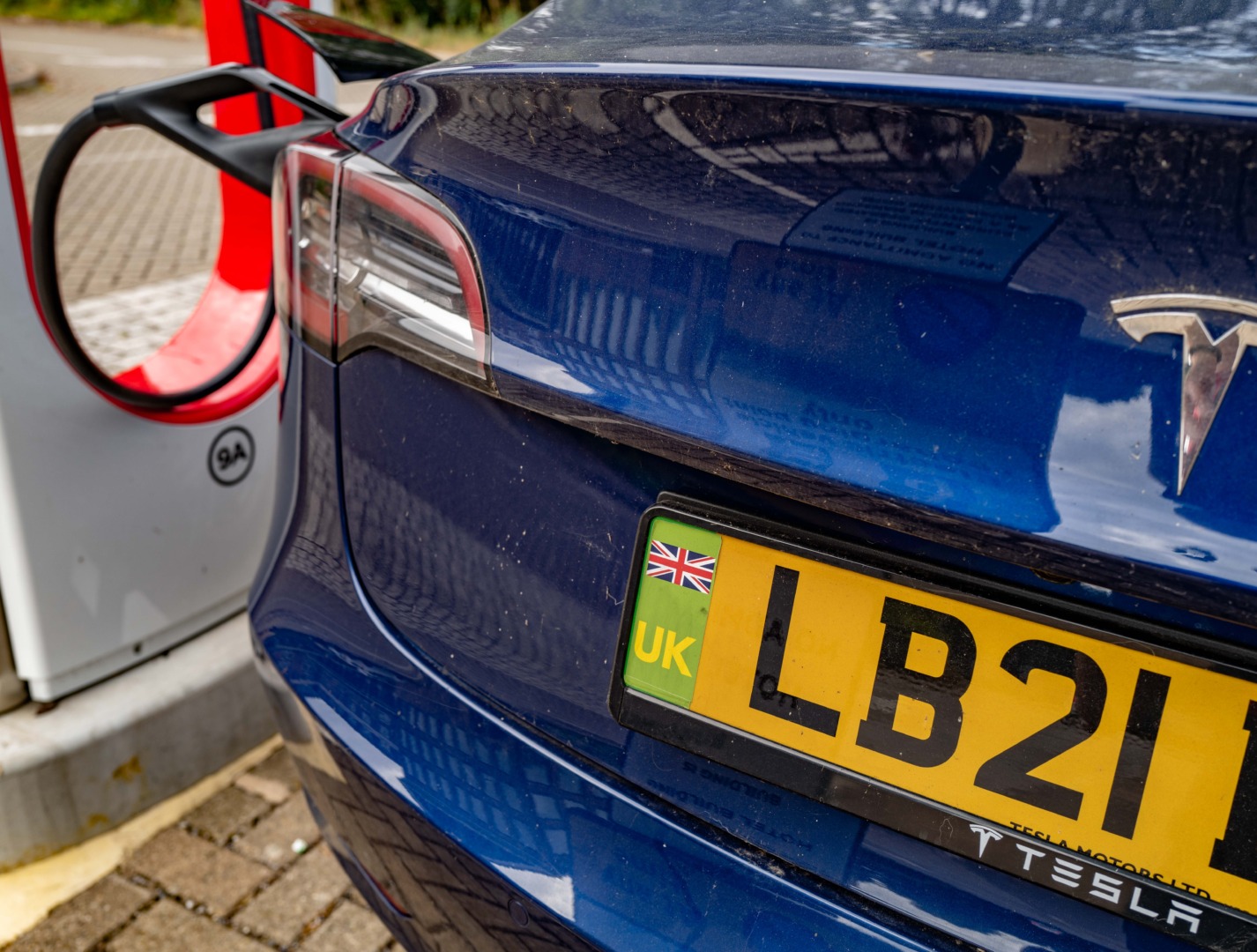
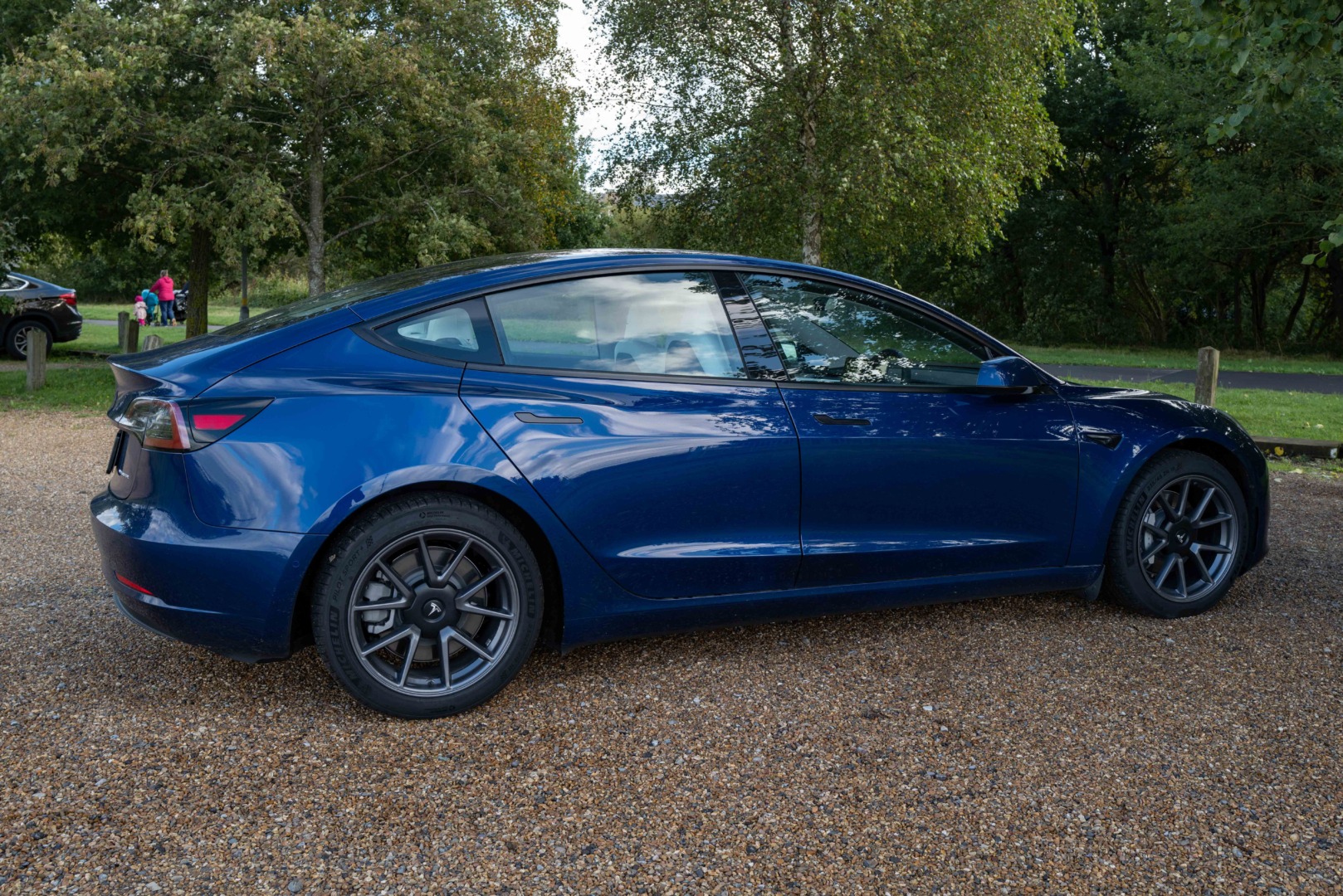
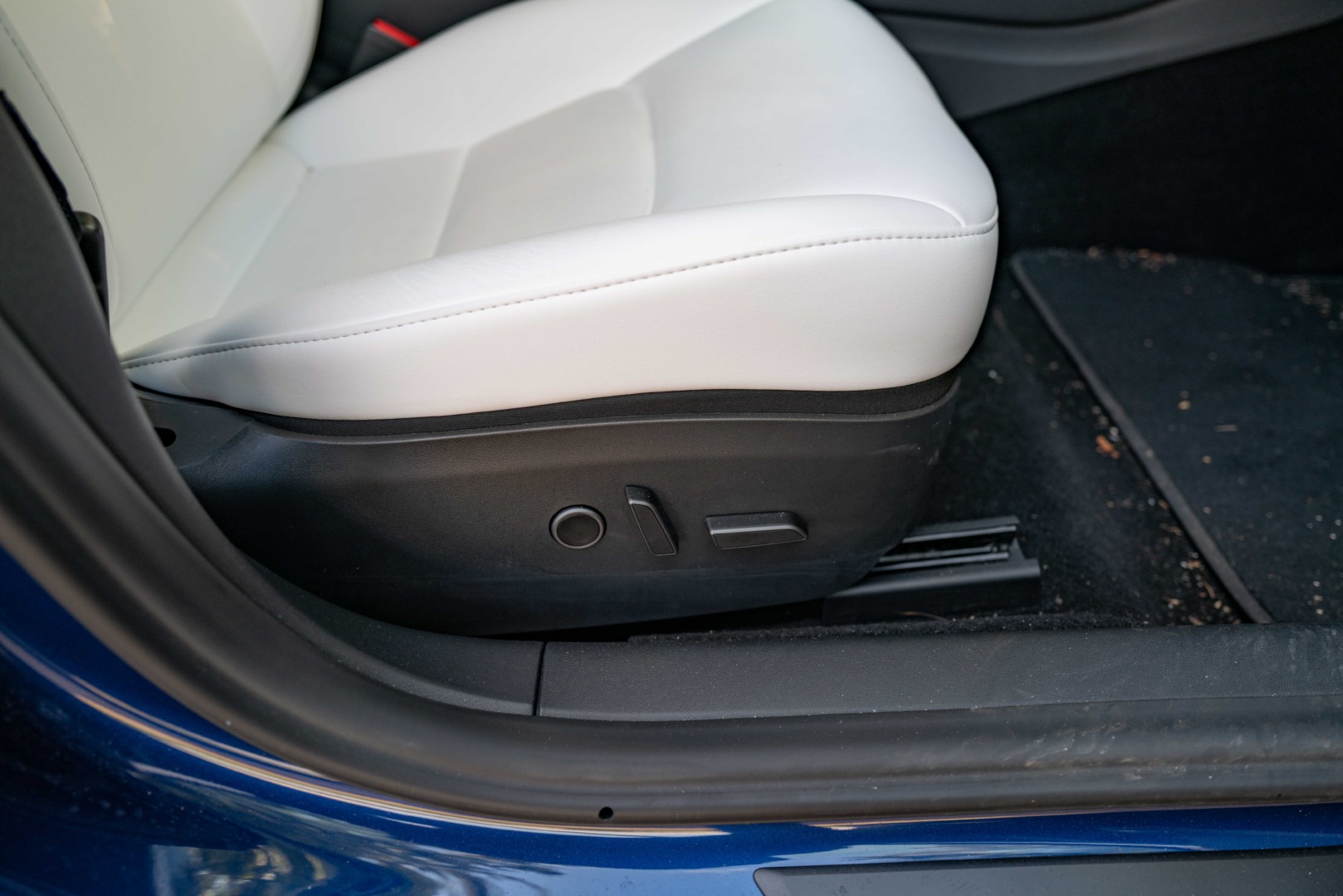
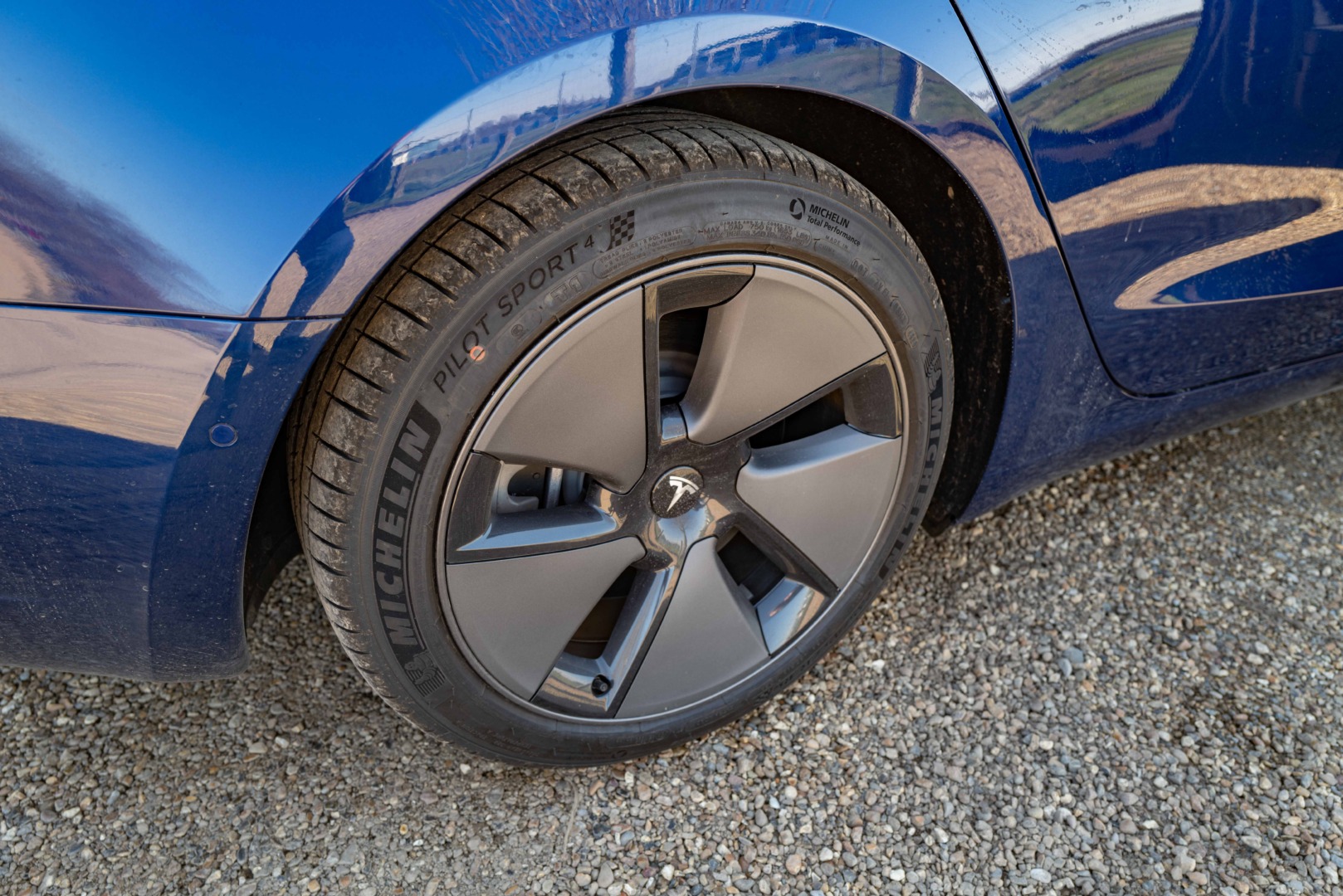
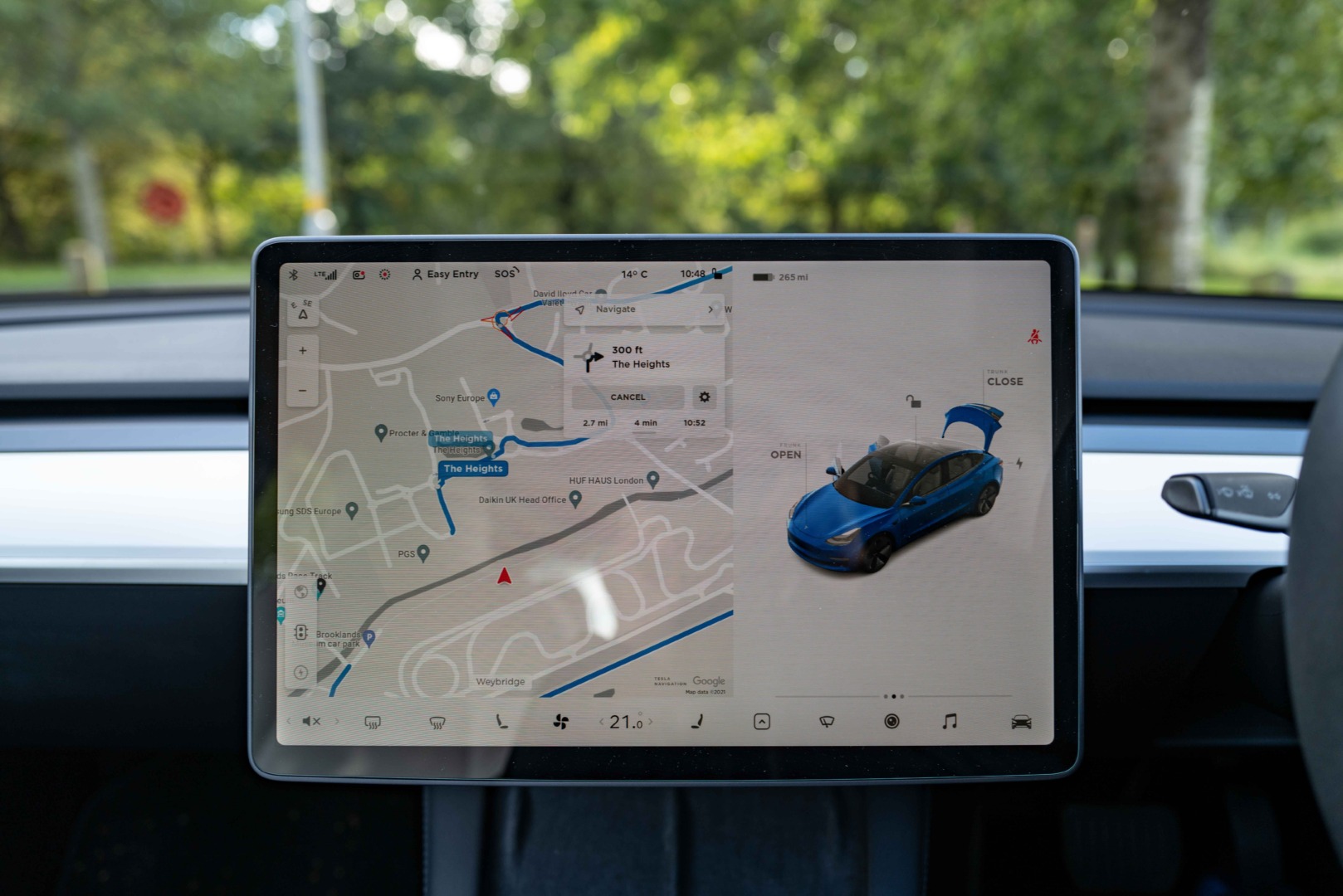

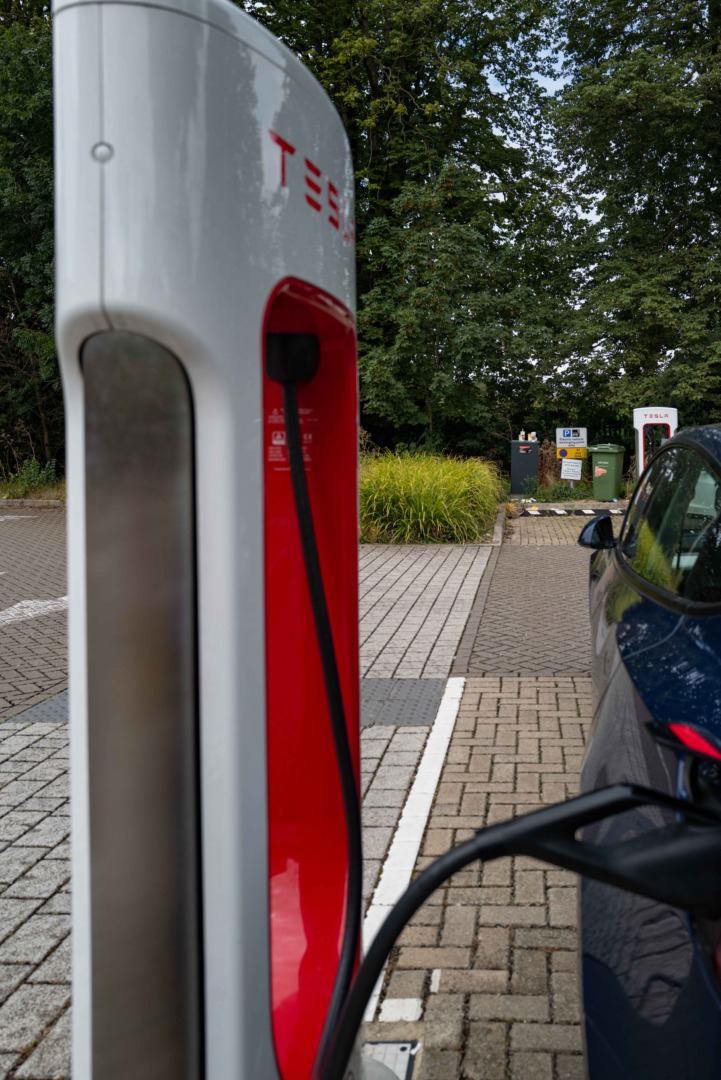
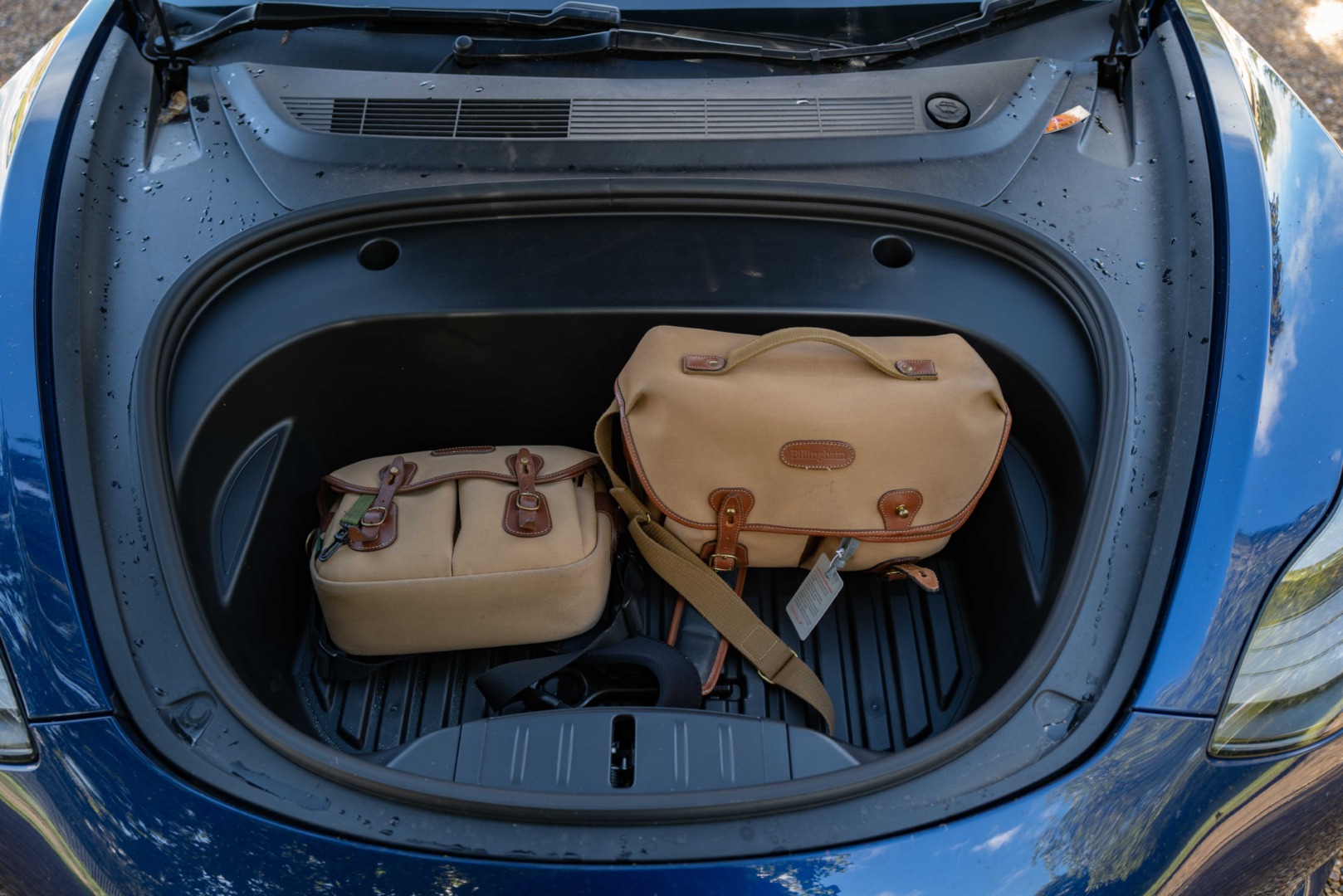
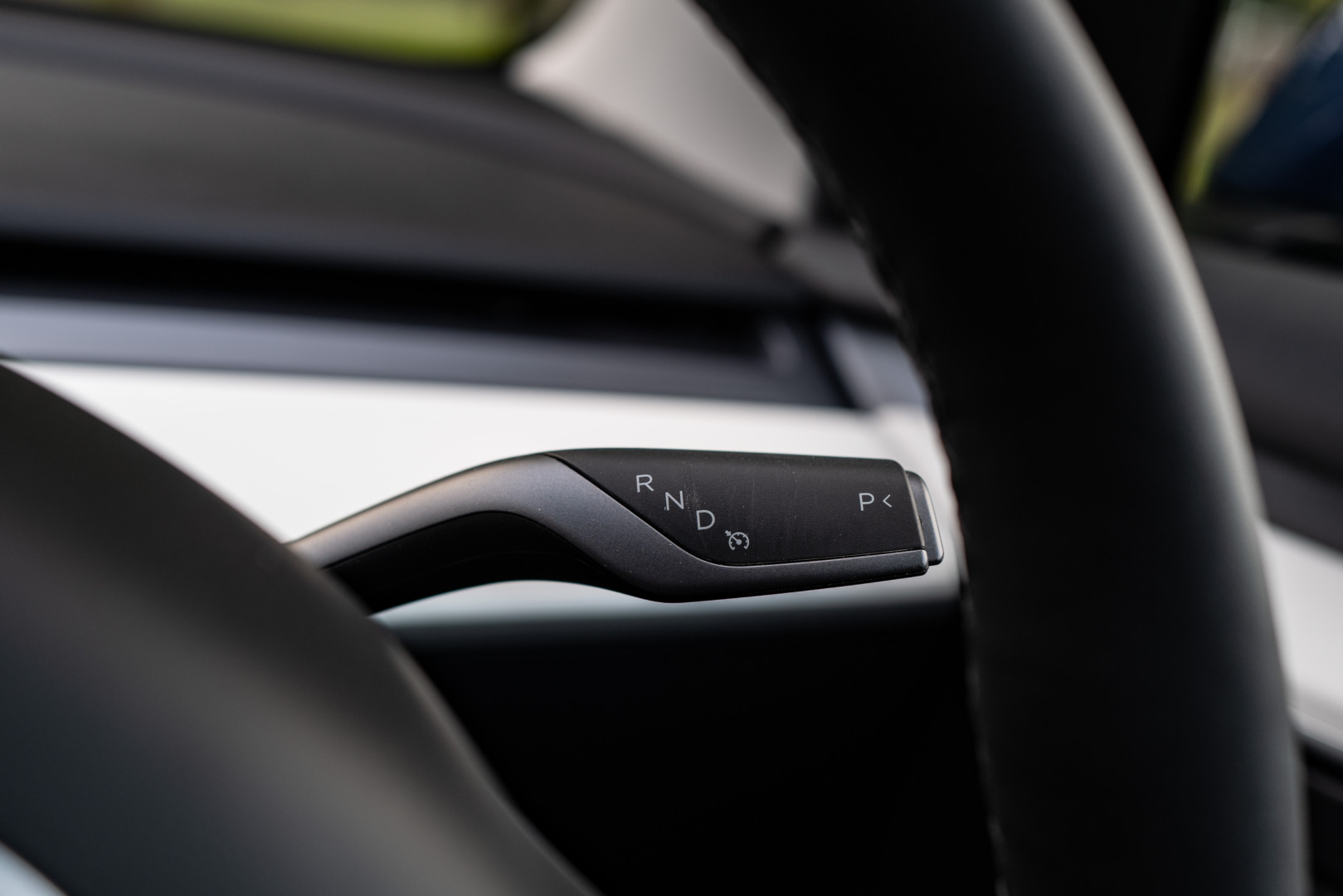

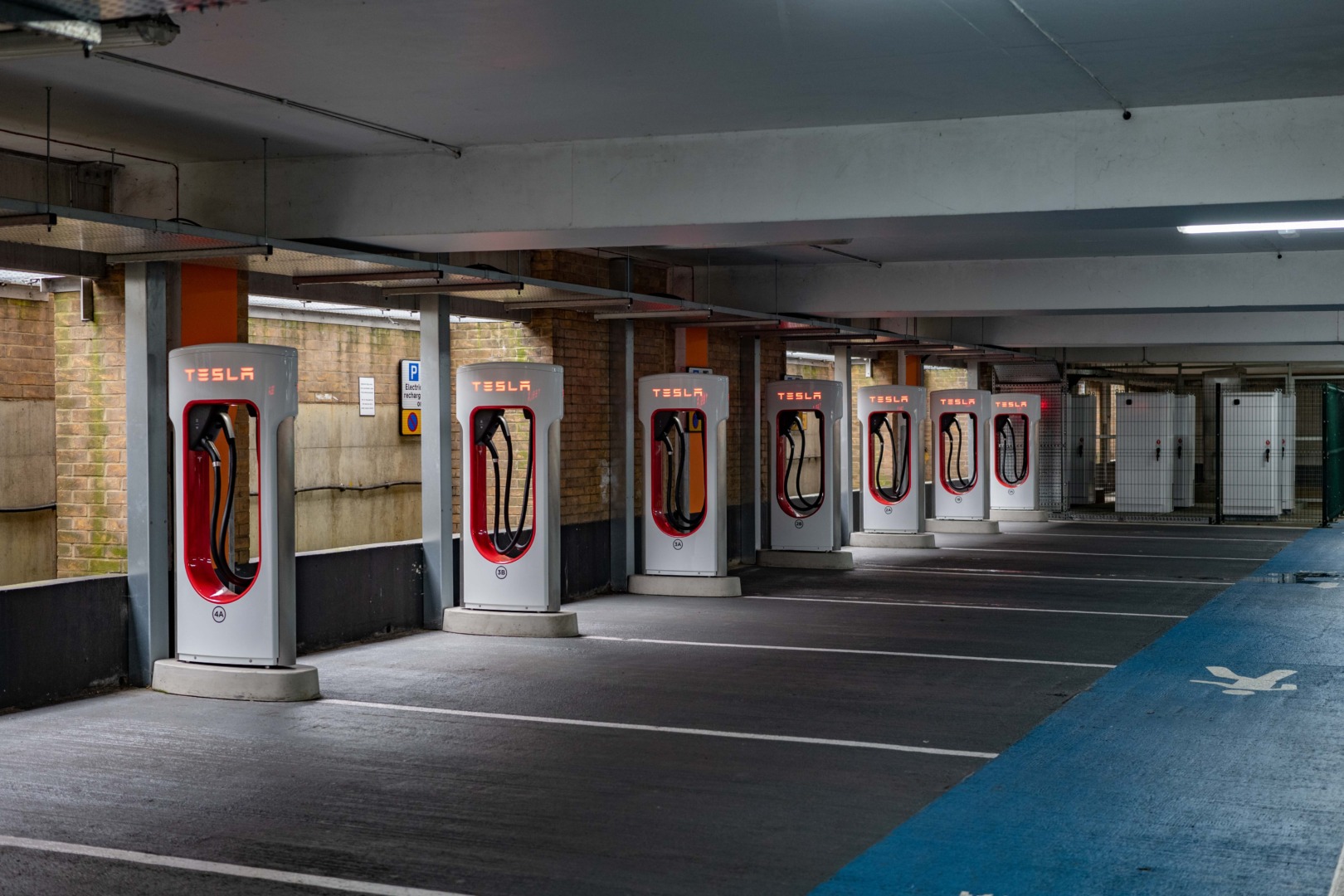
It intrigues me that with cars you love all the sophisticated technology. But with cameras you like one so simple it has no screen and nearly no options.
I agree with on the camera front. But I also like my cars as simple as possible. Possibly because I live in the Aussie bush and if something goes wrong you have to be able to fix it with a bit of fencing wire and an old shoelace. Hence a diesel Landcruiser to transport my Leicas.
Definitely the right choice… horses for courses. And Tesla would charge the earth for fencing wire and shoelaces.
As well as working in the automotive industry for over 50 years and being a fully certified car and motor sport nut and having owned two Porsches for many years until recently and now a modern era Mini CooperS I never thought I would find myself singing the praises of electric cars yet alone owning one. However that’s where I find myself.
I’ve never driven a Tesla but I have been a passenger in Mike’s for some distance and I can understand Mike’s enthusiasm for the car.
Last year my partner purchased an MG4 EV and she -and I-are delighted with it. The build quality is excellent. It is very well equipped and most importantly it is fun to drive. It is fast-particularly off the line and it is very quiet and smooth.
We have rooftop solar on our house and a smart charger which directs the solar generated power to the car when it is plugged in during daylight hours. So far the running costs are zero and my electricity account is still in credit-another plus from living in sunny Australia.
We bought an EV for environmental reasons. But even if you are a dyed in the wool climate change denier you should seriously consider an electric car because they are great to drive and very economical to run.
My daughter has recently purchased a BMW EV and she is also very happy with it. She would not consider a Tesla. When my Mini is up for replacement at the end of this year I will switch to an EV-most likely a BMW-but definitely not a Tesla for the same reason as my daughter.
John,
Thanks for adding to the story. I agree with your assessment of EVs in general and, as you know, we had a long chat about this when you visited London last year. I also approve of the choice of the MG4. I tested one and was delighted with it. While the interior was perhaps not as well finished as you might expect, the exterior is certainly good-looking and solid. Overall, I would consider this car. It is half the cost of the Tesla Model 3 and (like a third-party L lens) probably provides 90 percent of the performance and enjoyment.
As I mentioned to Kathy earlier in this thread, we also have an MG in the family. It’s the MG XS hybrid plus, which, again, is well-built and easy to live with. For around £20,000 it is one of the cheapest cars on the market, yet our top-level version has just as many toys and gimmicks as the Tesla in its basic form. It’s a remarkable achievement, as much cheaper than a base Golf, for instance.
I hadn’t considered the effect of solar charging on EV use, and I can well see that EVs make a lot more sense in Australia than they do in England. Our Dunkelflaute winters are not encouraging when it comes to solar charging — although I have some friends with solar panels who claim that they enjoy zero fuel costs in the summer.
Mike
What a funny thing to find where I go looking for Leica stuff! Happen to be in the process of selling my 2020 Model 3. On balance it’s been a good car, virtually maintenance free and pleasant to drive.
But there is a Tesla way. For instance, on cruise control (the lite form of self-driving) my Tesla would brake suddenly on open road for no apparent reason. Instead of looking at the problem, Tesla sent me a note listing all the conditions that self-driving might not work. This list was long and included “driving in bright sunlight.”
Same thing happened with the windshield wipers going on randomly and without cause, which got a similarly oblique message indicating it just wasn’t something they could fix and could be caused by any number of issues (that don’t impact other cars’ wipers, but hey).
I don’t mind that things can go wrong, but Tesla’s dismissal of all problems borders on being offensive.
I should add that Teslas can be expensive in some regards. We had a relatively minor dent in the front-left side of the car, and because it’s modular, and, I think, has electronic components, the entire thing had to be replaced at a cost over $3,000. Some parts of the car seem cheap, but I like its bare-bones aesthetic.
I’ve enjoyed having an EV. I’ve studied the issues with cobalt mining and am weighing that against the environmental benefits of reduced carbon emissions for my next purchase. It’s not an easy call. So far, according to Amnesty Int’l Tesla is one of the better actors in managing these issues in their supply chain, but no company is great and I’ve seen conflicting reports about them. I’ve been looking at Hyundai’s EV, but they’re not great in this regard either. Funny, the age we live in when consumers are aware of the supply chains of what we buy!
To be frank, my family is embarrassed to be seen in a Tesla, and I think it’s reasonable to not trust the company in the hands of its current CEO. Hope that last statement isn’t too political, but I think it’s valid in thinking about these cars.
Hope my comments were constructive to the conversation here!
Hi Bud,
Yes, you can be excused your surprise. I’ve been running Macfilos for 17 years and, in the early days, specialised in technology, especially Apple products. I have written about all my EVs since then. Although motoring is off subject, we do get numerous views from Google searches. I hope some of them stick around for a bit of Leica indoctrination.
All your comments on Tesla are valid. I’ve had issues with phantom braking and the sometimes erratic windscreen wipers, but I don’t find either a dealbreaker. Perhaps I should have mentioned this in the review, but I forgot. The wiper situation has become better and it now doesn’t worry me. Similarly, so-called phantom braking was often a worry when I first got the car. Again, though, Tesla seems to have tweaked the sensitivity. I can now usually understand what the car’s sensors are detecting and can almost predict when the car will brake. It’s particularly prone to do so in congested areas where it can mistake a parked car for a stationary car. Overall, I put it down to cautiousness and, in some respects, this is a good thing. It only needs to get it right once to save me an expensive and distressing collision.
As you note from the review, I haven’t had any accidental damage and therefore have not experienced the cost of repairs. I did allude to this in relation to insurance, and I have watched many videos which touch on the repair problem. I also see that EVs are more likely to be written off after a serious accident than are ICE cars.
As always, you need a long list of pros and cons before making a car buying decision!
Mike, thank you for replying to my comment and all these comments so thoughtfully. Most sites don’t enjoy this level of discussion in the comments.
I just want to say that, while you and I are fine with those oddities like phantom breaking, it’s really the company’s response that I find troubling and dangerous. I also had the computer reboot while I was on the highway. I can deal with that, but if my wife were driving (and thus may have panicked) the outcome could have been different. Tesla—characteristically—was dismissive.
Thanks again! Maybe sometime soon I’ll submit an article about my love of the M11-D!
Many thanks, Bud. The big difference between Macfilos and many other sites is that we are all volunteers and have a personal interest in the subject. I’m lucky to have the support of several Leica enthusiasts. I am in London, where we started, but we have associate editors in Germany, California, and Illinois. In addition, we have a keen Leica enthusiast here in London who does wonders in helping maintain the technical aspects of the site.
Back to Tesla, I have not directly experienced Tesla stonewalling on such issues, but I have read enough articles and watched videos to understand that it is a real problem. In many ways, Tesla is an odd company (with no press office, for instance).
We are always keen to have stories on the M11 and, particularly, the M11-D (which I also own as my sole M digital currently). So sharpen your pencil and get in touch!
Mike
Why sell and buy a new one? Those Tesla’s can drive 800.000 km or even more, and yours appears to be practically new? I’ve always driven my cars long, the largest depreciation after all is in the first years. My current car is 8 years old and I’ve owned the car before that for over 14 years, 230.000 km plus. Since I’m driving less now, I’ll probably drive this one for 20 years or more.
You are absolutely right, Rene, and I know that my heavily depreciated but as-new Model 3 is good for many more miles and years. Keeping it is by far the most sensible choice. However, I just fancy a change and, as I said, four years for me is like keeping a car for a lifetime!
Mike
I sympathise Mike that you lost 55% of the car value in the first four miles although I suspect you meant years !
Thanks Tom. It felt like four miles at my age. I shall amend it forthwith.
For what its worth I have had a VW 1d3 Electric car for three years and I would definitely not go back to petrol/diesel cars. As mike says they are so much better and i might say easier to drive. Range anxiety: I live in Aberdeen- picked the car up from Oxford and set off for Bridgwater in somerset straight away to see my brother. I had never charged an ev in my life at this point. After a few days I set off home to aberdeen, 550 miles away. No issues at all with charging. The car has a theoretical range of 260 miles, of course its less, stopped several times to charge and coffee. I’ve done the trip now to southern england several times now and really don’t worry about charging.
Unlike Mike one of my main reasons was environmental issues ( and yes I know about cobolt mining ). Many human activities do so much damage to others its hard to make fully informed decisions, coal and oil have caused us so many problems and will continue to do so way into the future, we literally haven’t even started to see the full effect of climate change yet.
Back on the car issues. The cost of running it was also an issue for me and it is so cheap to charge at home, where 90% of my charging is done, having an ev is effectively like running a car with no fuel cost ( its around £10 a month for me currently). I do around 10k miles per year. I could write a much longer piece than this about the good and bad of the car and my whole attitude to why I think its at least a part of the solution to our current problems. But this is an letter, not a feature.
I have friends with an ID3, and they are delighted with it. The larger ID7 has an excellent reputation. I am encouraged by your comments on the ease of charging when on a long-distance journey. My experience with the Jaguar was five years ago, and I know that there has been a massive increase in charging facilities since then. My view has perhaps been coloured by the contrast between the Superchargers and my experience of five years ago. It’s good to get your experiences.
I will never buy an electric car because of all of the issues such as children mining cobalt with no masks. Just google cobalt. Also we are short of electricity in North america. As an electrical engineer I will stick to gas. I could also make the obvious political comment but it would get redacted. Hey, my whole comment might disappear.🫠
Thanks Brian. I hadn’t thought of that battery aspect but it’s a valid point. Hey, and you haven’t been redacted!
HI Brian
I hear where you are coming from – and Tesla are working towards Cobalt free batteries (even iPhone 16s have cobalt in their batteries). But the solution is not to remove the requirement for Cobalt but to reform the market for it, and to make the mining responsible. Tesla should be doing this (and VW and Apple and everyone else)
This goes for so many other products, especially the clothing and textile markets.
. . . . . . . But in the final analysis EVs are about 90% energy efficient and ICEs about 35%, and that is relevant for the planet.
I will agree to disagree on the environment. One needs to look beyond raw car efficiency. As an example, the extensive use of coal powered electricity generation plants in China used to make cars…
Also, if the batteries fail, even in a new car, the car is junk. If the batteries have any damage in a fender bender, the car is junk.
If the cars catch fire in an accident, they are virtually impossible to extinguish. The batteries are stored in the bottom of the car and if the bottom gets dented the batteries will explode and you do not need to pay for cremation. Understanding all the risks of an electric vehicle, I will not ride in one – it is so nice to have choice. Electric bicycles are even a bigger safety risk and are responsible for a lot of fires in buildings.
Hi Brian
I did some research about fires in electric cars – quite a lot actually – just one statistic, in the first half of 2023 4 people died worldwide in fires reported in electric cars. They are much safer than gas fuelled cars. . . . . but I won’t labour the point – you can do your own research – it’s absolutely clear!
The Cobalt issue is different – but cobalt is used in lots of other industries (including making petrol). Child – and other artisan mining – is inexcusable but it’s not limited to battery production for EVs, or for cobalt.
All the best
Jono
Thanks, Jonathan for these facts.
Bear in mind that the lithium ion battery chemistry is used in all manner of devices, not just cars. This includes phones, cameras, tablets, laptops, aeroplanes (Boeing had an onboard fire) and many other handheld chargeable devices. Cobalt is also used in many grades of stainless steel, paint etc.
Not all EV cars use lithium ion batteries. I understand some of the lower spec models from China have a cheaper battery chemistry that doesn’t use cobalt or nickel. The downside is lower energy density, therefore either heavier batteries or less range.
By way of comparison, I’m still driving my 2005 Lexus ES model. Though, this year I had my first major service in 20 years — US$3000 for ‘undercarriage work’. Not bad for 20 years.
It’s quite a luxurious ride, and I can find fuel stations almost everywhere. I drove a different car from Canberra to Adelaide in 1985, and even found fuel deep in the journey. I did have to interrupt a billiards game at a pub, but the men were very gracious, though fuel was metered by putting a stick in a barrel. An experience one doesn’t have with an electric vehicle — for good or bad. I haven’t, to my knowledge, needed any software updates.
I’d looked at the Jaguar S-Type, but felt service might not be quite as easily available in America.
I can’t help but mention the story about Mr. Tata: “When I was a boy, I always wanted to own a Jaguar.”
Interesting, Kathy. We have a second car in the household. Until recently it was a Mercedes A Class, purchased in 2005. 100,000 miles and going like a grouper. Until just before Christmas, the gearbox started playing up. It made no sense to replace, so it sent to scrap for a cheque for £250. We have just replaced it with an MG hybrid, which is loaded with toys and yet one of the cheapest cars on the market. Excellent — so far so good.
Hi Kathy
We still have our Saab 900 16T cabriolet from 1994 – which we have vowed to keep forever, it has done 1/4 million miles and is still cracking on creakily! I also have an Audi S5 cab from 2012 which is almost like new (140,000 miles). The Saab was costing money quickly and has maintained the trend – but the Audi has had nothing but regular services (with no extras) and has been a magnificent buy
Sounds like a motor park. You could start a vlog, Jono. Good job you don’t live in London!
We also have a VW Ocean and a 1954 Fergie tractor Mike!
Are you able to actually garage all these vehicles? I suppose the need depends of what kinds of weather you have.
But — for both your and Mike’s stories: a quality car can be a good long-term investment. There is a story associated with my car. It’s got a good bit of natural woods — not Bentley level (think of it as a cheap Bentley wannabe). Apparently Lexus stored portions of the same tree from which the wood was cut — in case of need to replace after an accident.
Notice the past tense — as I understand it, the stirage facility didn’t survive the 2011 tsunami. C’est la …
Ah, a tractor! I could go demonstrating on Hammersmith Broadway at the rush hour!
Nothing beats the campers. I own a converted T6 and spend most weekends sitting on the coast somewhere, yesterday was Broadstairs, and have a trip to Brighton planned this week. Still no truly decent Electric alternative yet. I had hoped they would eventually give me a hybrid option, but it’s yet to arrive.
I think specialist vehicles seem to have been left behind. But in any case, I’m not sure if electric power is ready for campers yet. Now hybrid is another thing.
[This sentence has been redacted in line with our editorial policy of excluding political discussion, which is invariably divisive.- Editor]
I sold my Model 3 in early January after nearly six years of ownership, and I could not wait to get rid of it (not for the reasons I just stated). It was reliable, but had QC issues that could never be resolved, had a rough ride and felt like a tin can. My wife’s Volvo EV was so much nicer, and just as reliable.
I now drive a Polestar 3, which is an amazing car! While Tesla has great software, other cars like Polestar have great car driving experiences. It drives beautifully, it’s quiet and it’s well built. The software has been slightly glitchy (mine’s a MY25, the “MY24” Launch Editions have far more problems), but it’s improving through updates. Polestar as a company is not yet on stable ground, but with new models coming out it should improve.
I had to wait months for the Polestar 3, and I waffled a lot about sticking with it, but I’m glad I did! It’s leased for three years, so I don’t have a long term commitment.
I looked at the entire landscape of EVs for my next car and only a handful interested me. And like you, I revisited hybrids and ICE cars, but EVs are just too much fun to drive! We still have a decade+ old Subaru Outback and I may replace that in a year or two with another Outback; it has certain uses that are still valuable.
And oh yeah, I’m also a committed Apple fan and Ricoh GR fan!
HI Andrew
Nice to read your reply. A Polestar 3 is certainly something I intend to test drive in the near future. Whilst I agree with Mike in theory that politics shouldn’t come into a car review, there are limits! I’ve decided to keep the Y (which is a great drive) for a year until it’s paid for, then get something else – and the Polestar is on the list!
All the best
Jono
Andrew. I appreciate and understand. But any more political comments will be deleted. Thanks for your constructive comments on the car, though.
Hi Mike
Good article – I’ve had my Model Y for nearly 2 years now, in which time I’ve done nearly 25,000 miles. I have also done a number of long journeys – several times to Cornwall, twice to Wetzlar but like you I’ve never had to wait for a charger. The charger network has improved a great deal in that time, now nearly all Service stations have high speed chargers (20%-80% in less than 20 minutes).
It’s really good fun to drive, with 0-60 in well under 5 seconds, but the same amount of acceleration at higher speeds as well (definitely fun on Autobahns). The regenerative breaking is brilliant, I take it as a point of honour to manage the 25 mile drive to work without touching the brake.
However, recently, being rather disgusted with Mr Musk I’ve been thinking hard about going for a different EV. I’ve tried a couple including the Audi S6 e-tron (recently released) – it was incredibly disappointing – despite the fact that it should have been quicker, it felt sluggish and made a noise like a fridge – and although the amount of screen real-estate was impressive, the controls seemed amorphous and messy, it felt like an attempt to turn a petrol car into an electric one. . . . Stories from friends with Taycans (beautiful though they certainly are) of lockouts and many problems put me off that (an obvious choice otherwise).
Like your Tesla, my only problem has been a couple of punctures – It’s a fantastic car, practical and good fun, and the cabin, which looks a bit Ikea to start with ends up feeling airy and cheerful.
The only thing I can really criticise about it is Mr Musk!
I’ve noticed that many comparative reviewers are keen on the likes of Audi, Mercedes and other luxury electric cars. But when it comes to the conclusion, the relatively non-luxurious Tesla. This is because it is so efficient and does most things well. Unfortunately, I haven’t driven many alternatives, although I know several people who have bought them and seem happy.
I test drove the Porsche Taycan four years ago (while deciding whether to buy a Tesla) and didn’t like it. I found it noisy, lacking in real regen-brake punch, but gorgeous inside. The list of extras was eye-watering, as usual, and I hear that depreciation has been much higher than with, say, the 911.
Mike